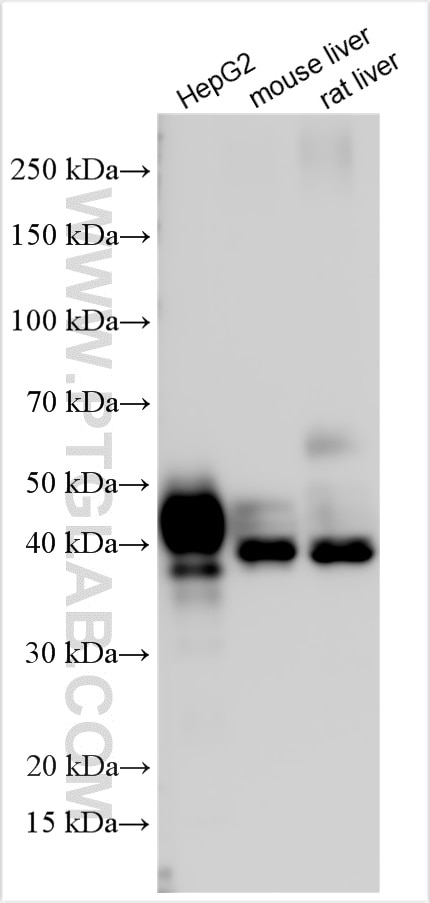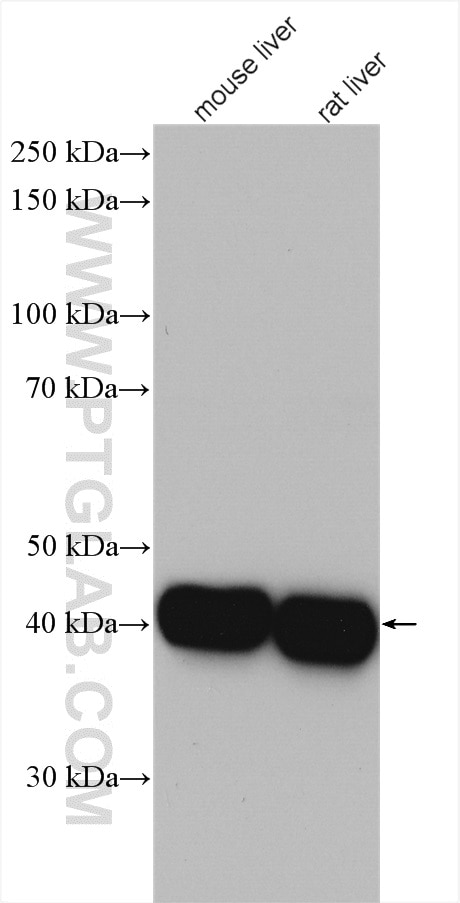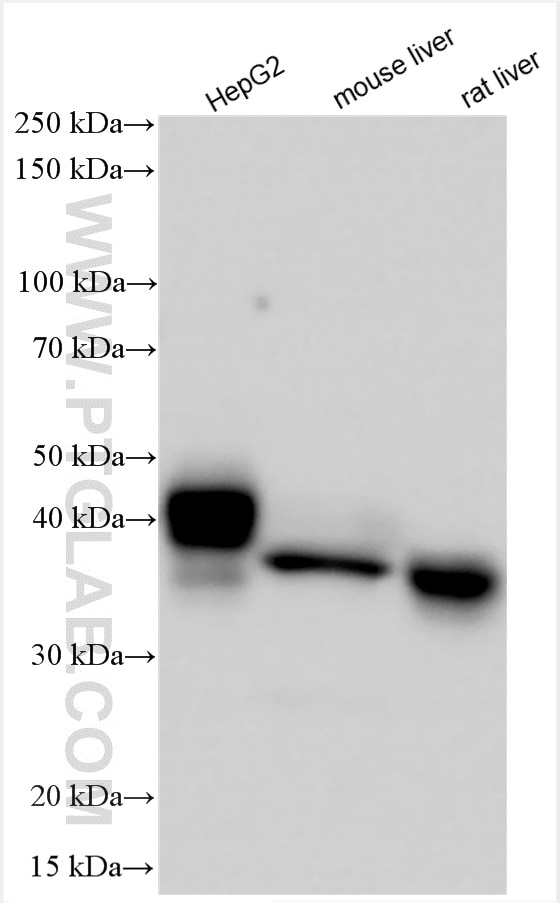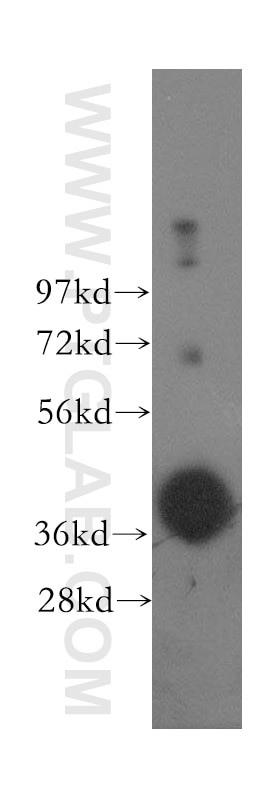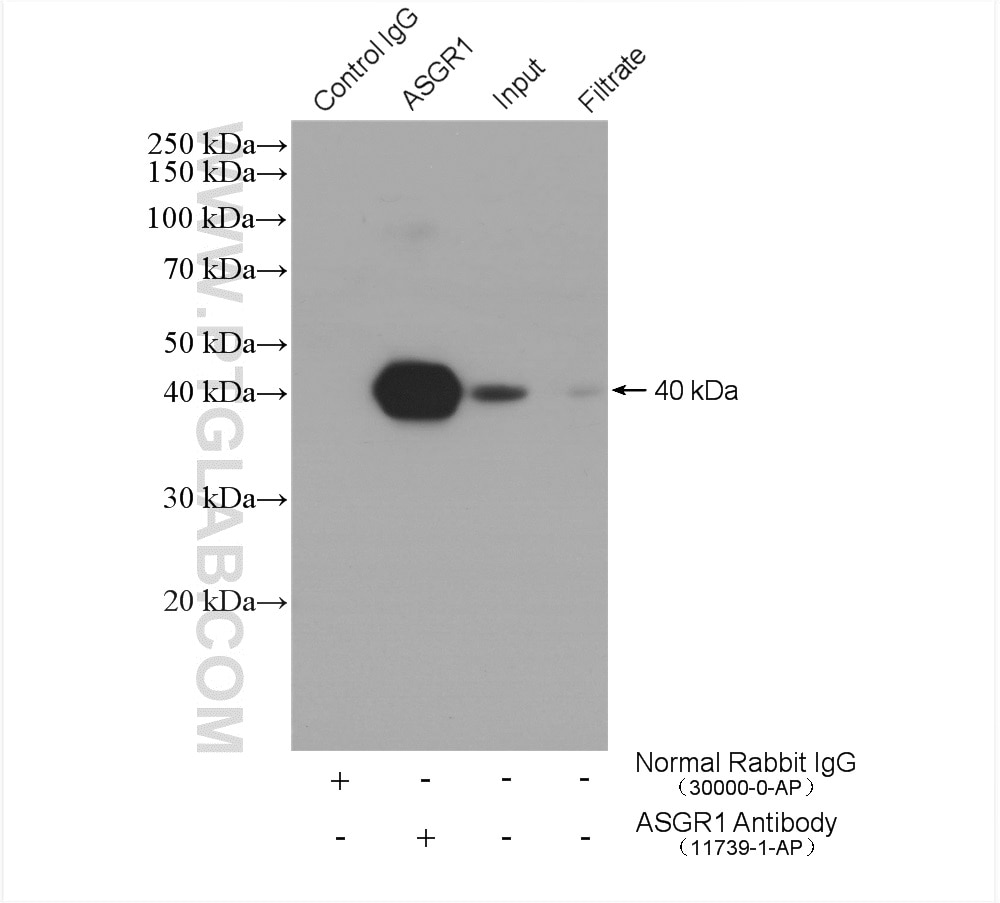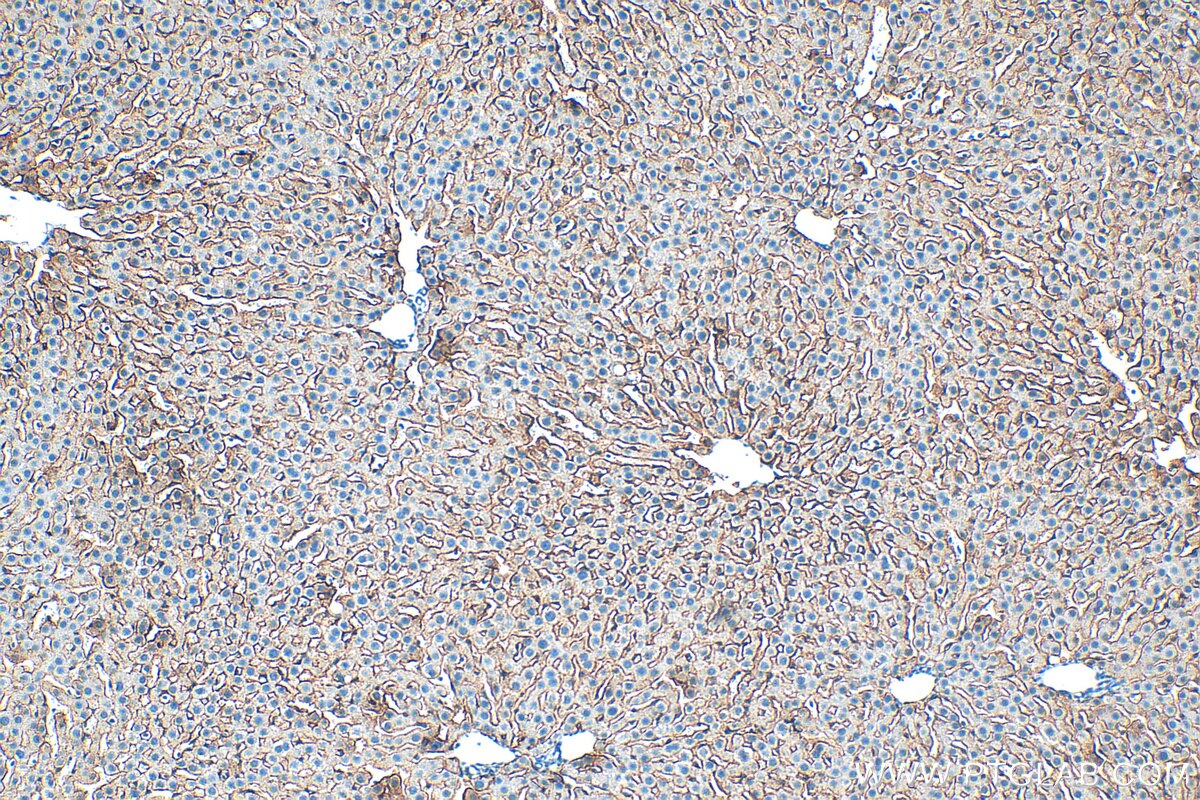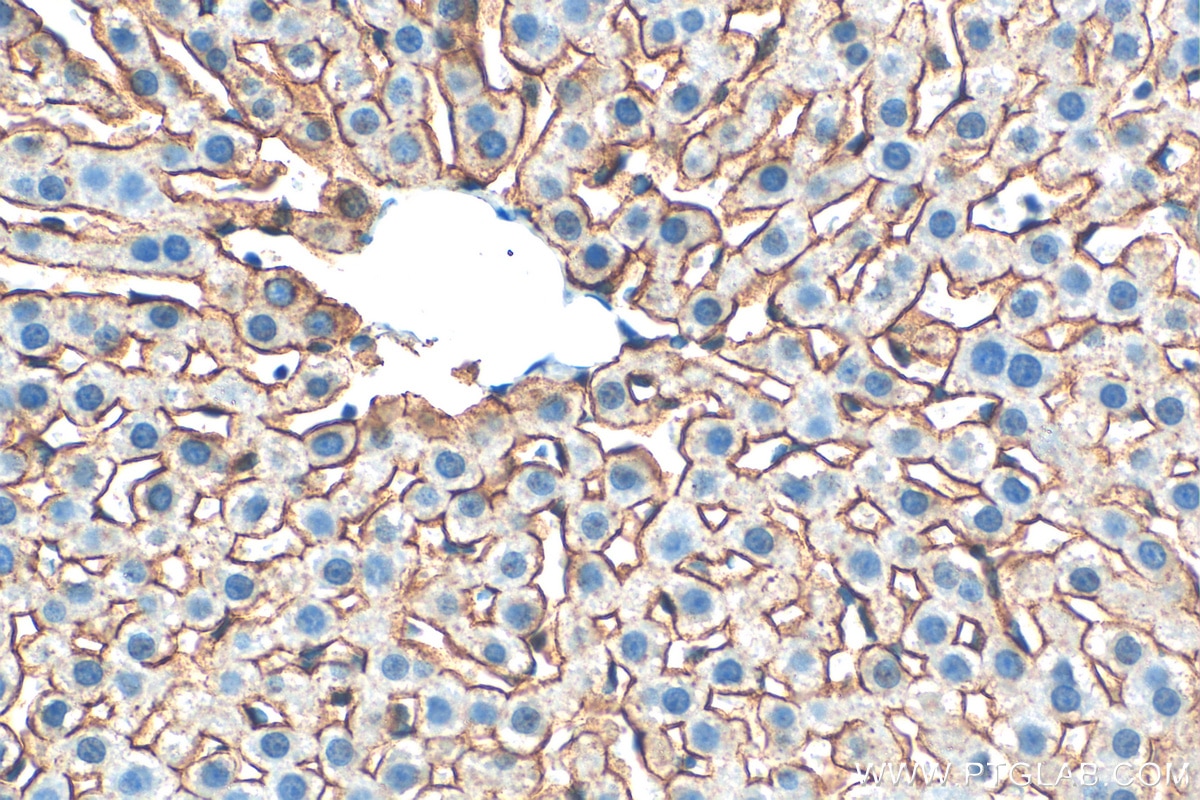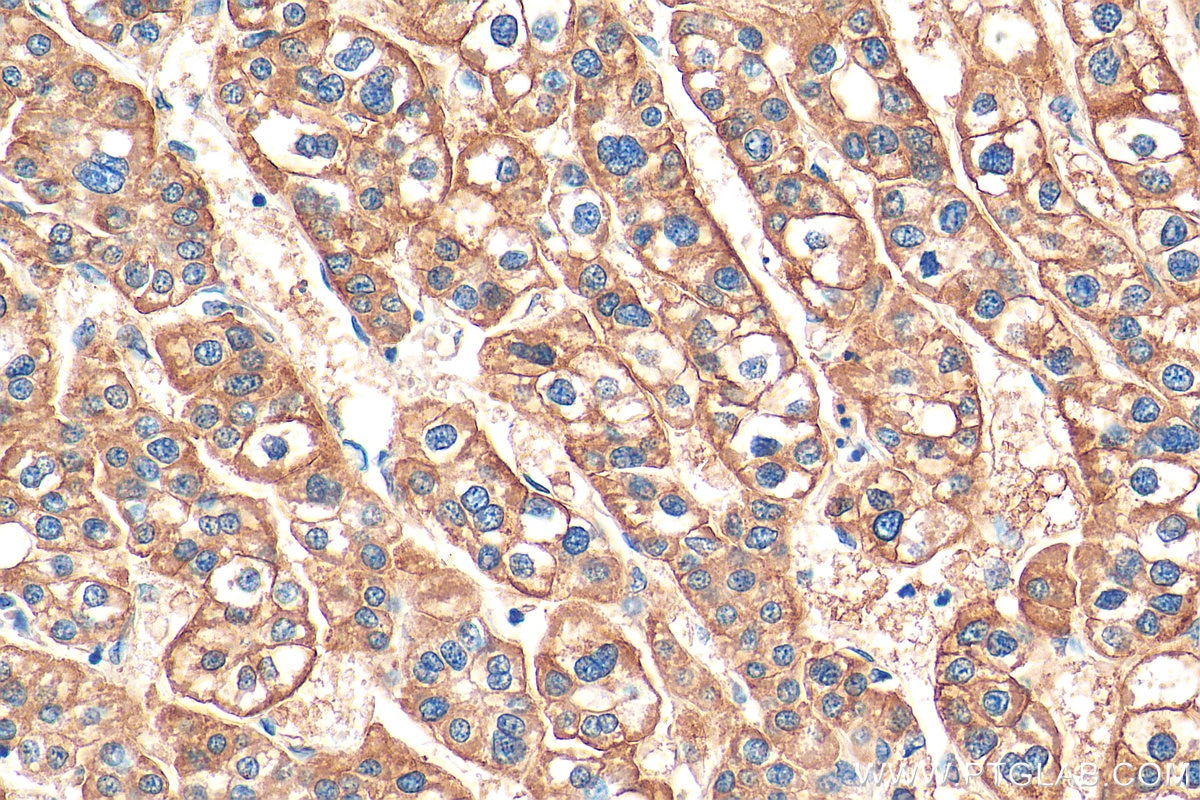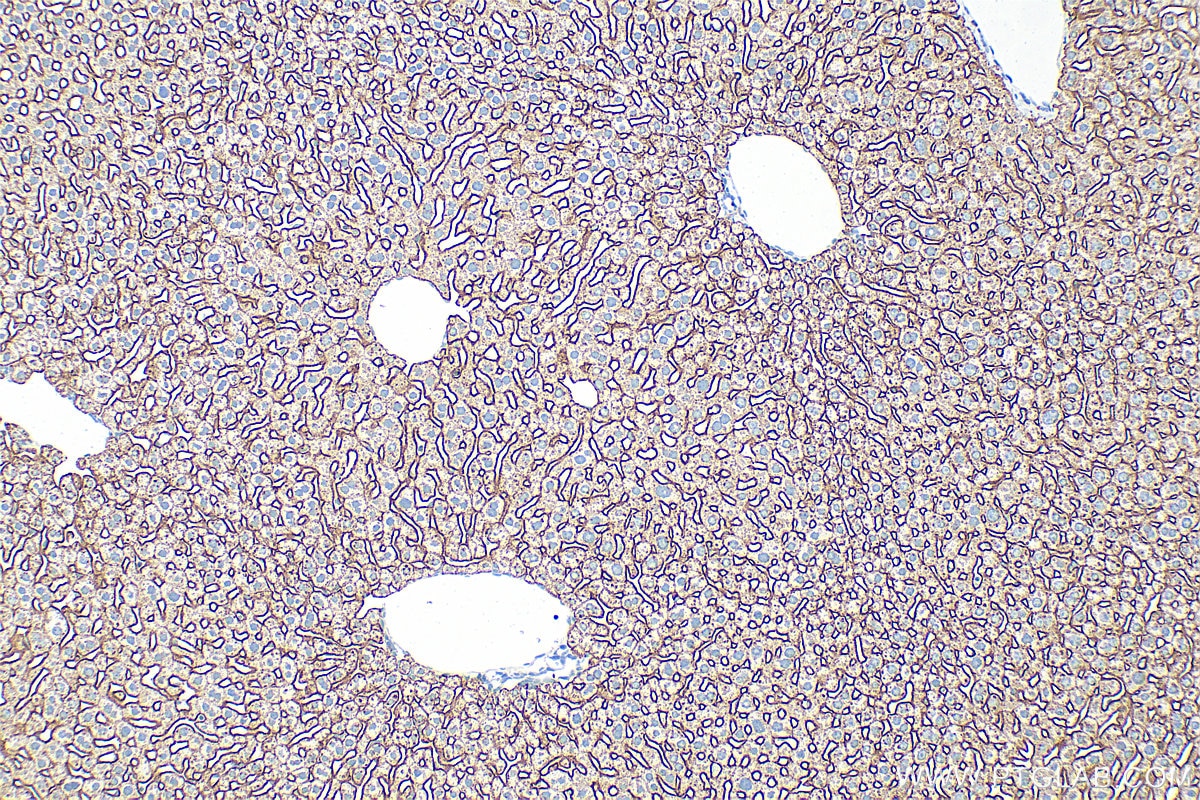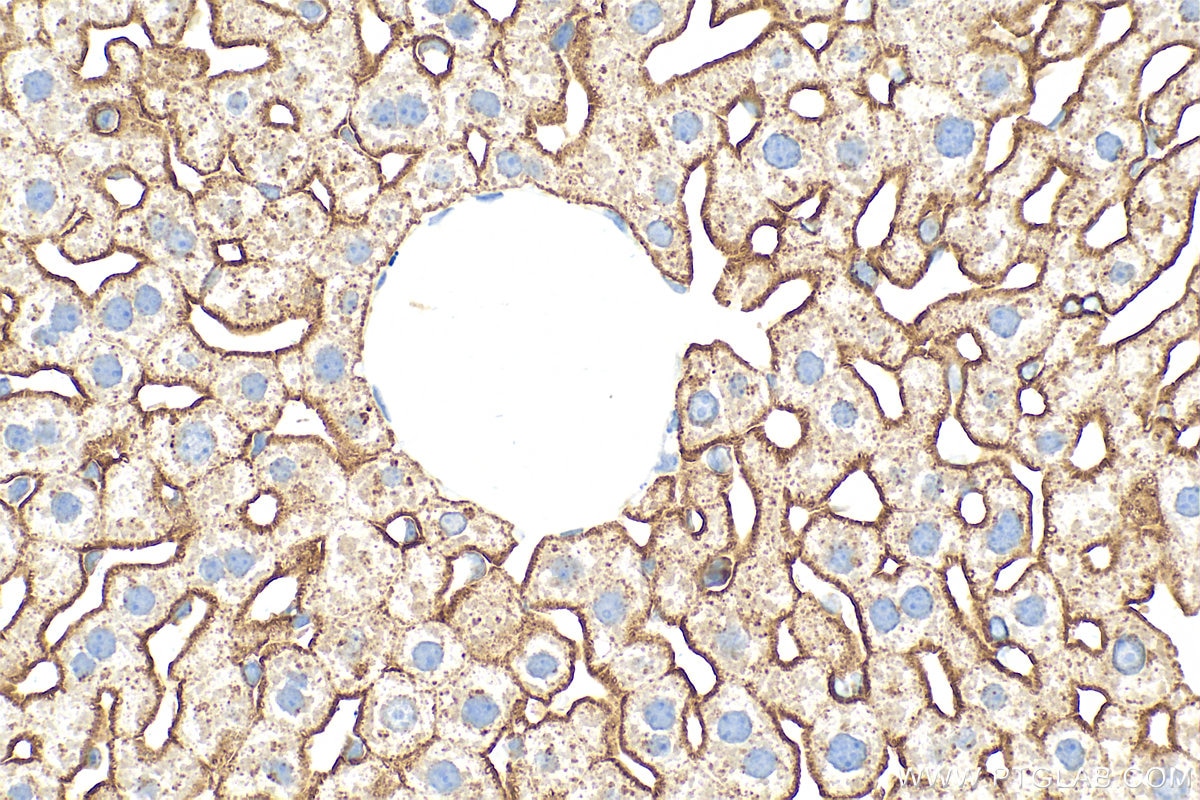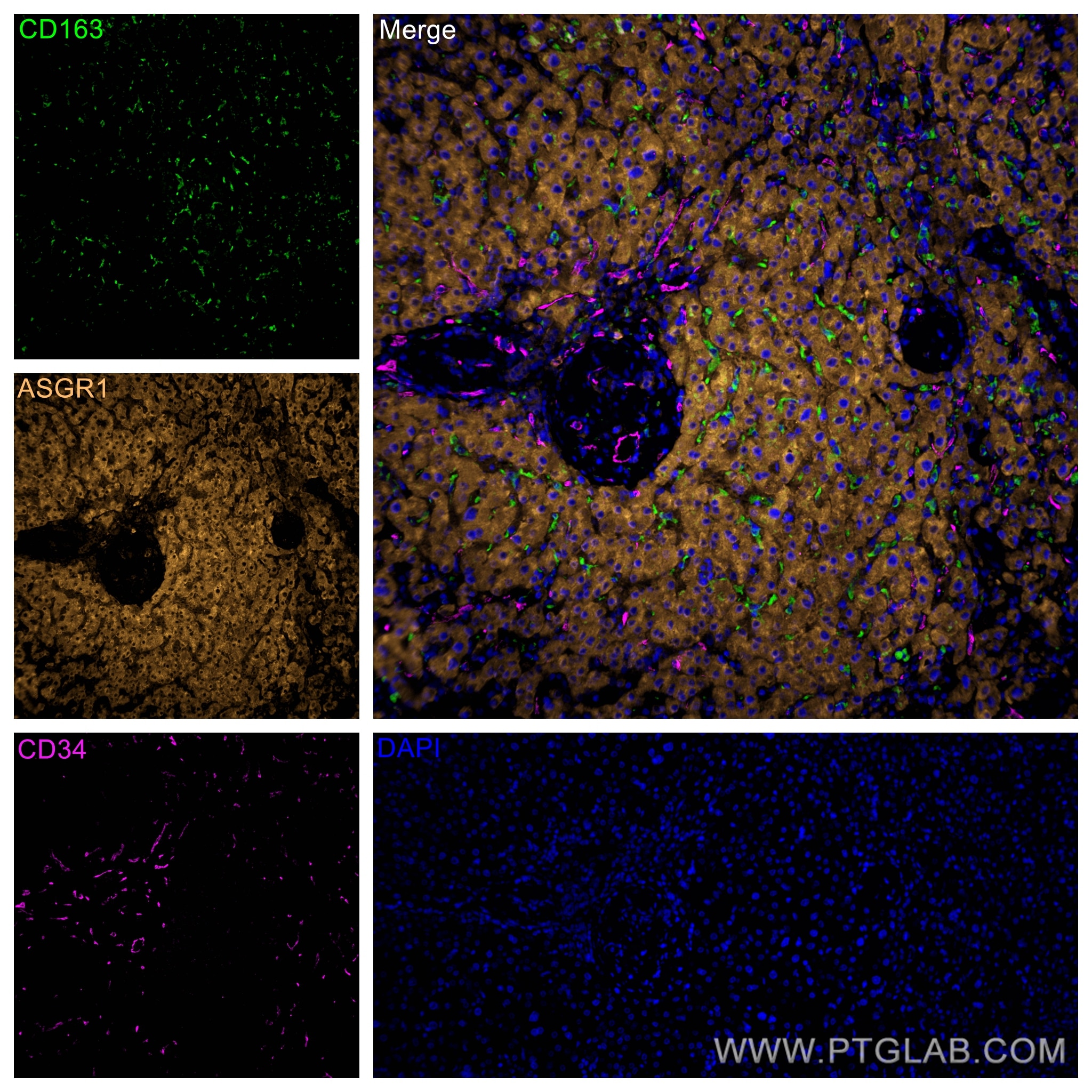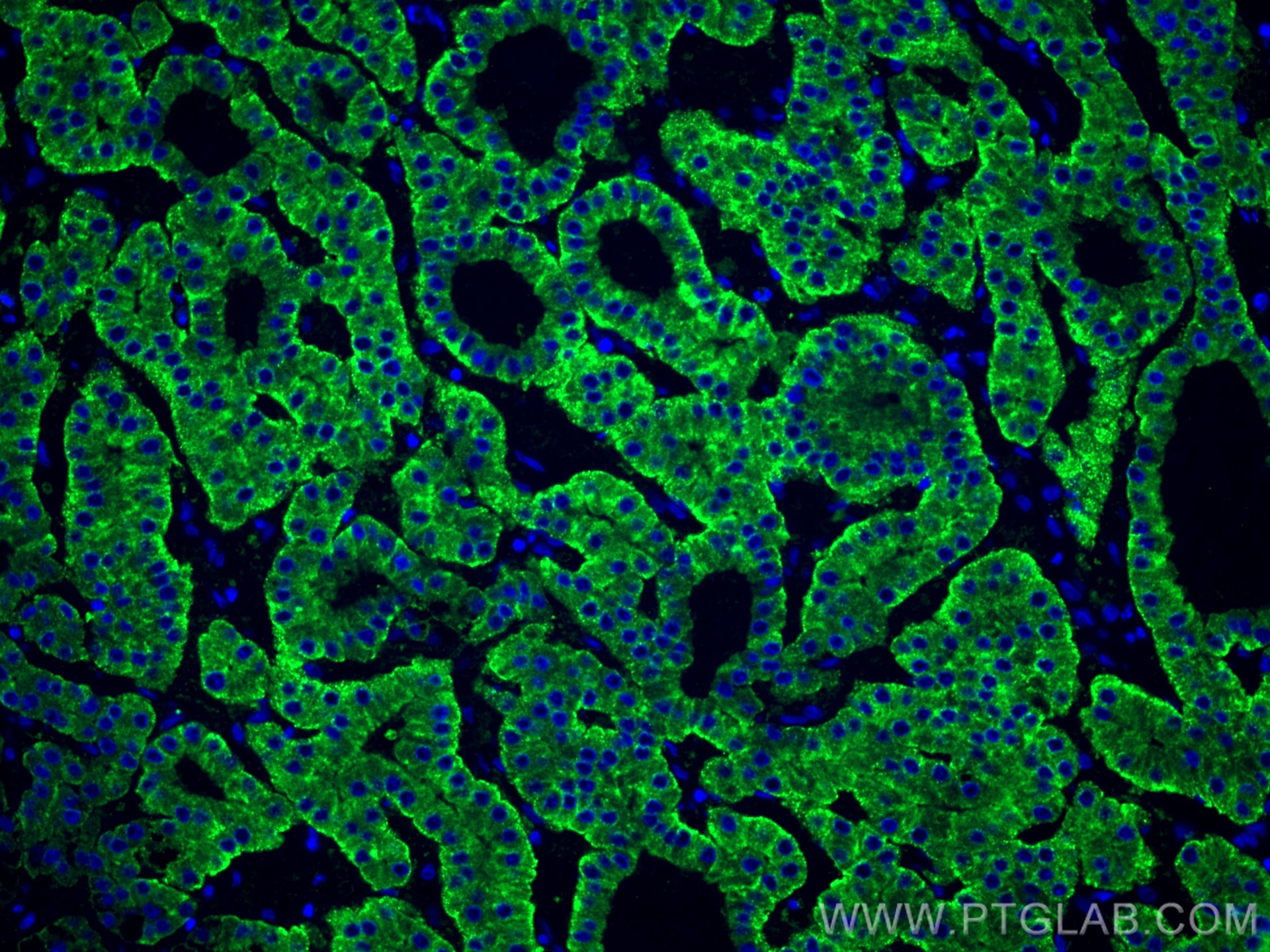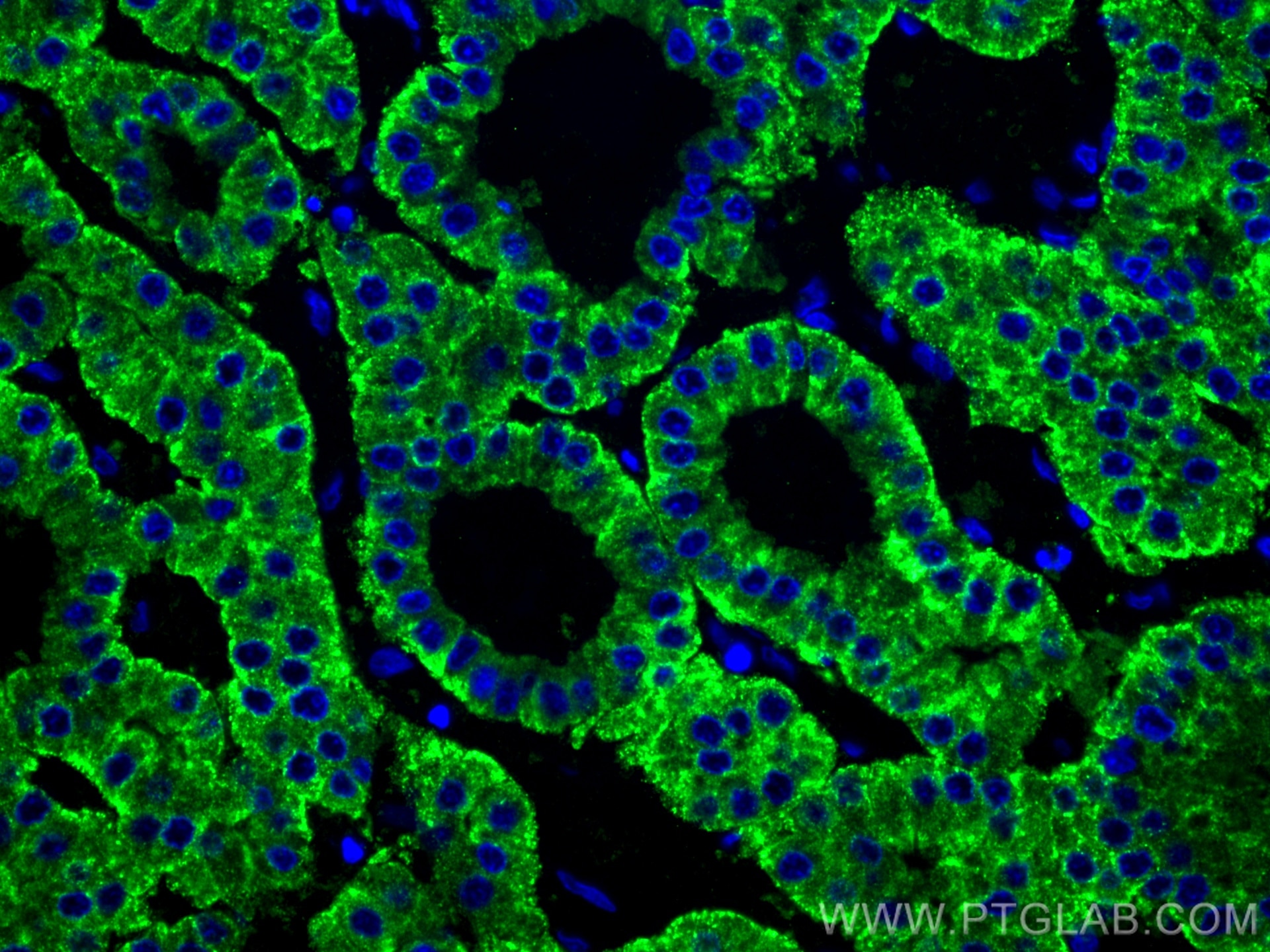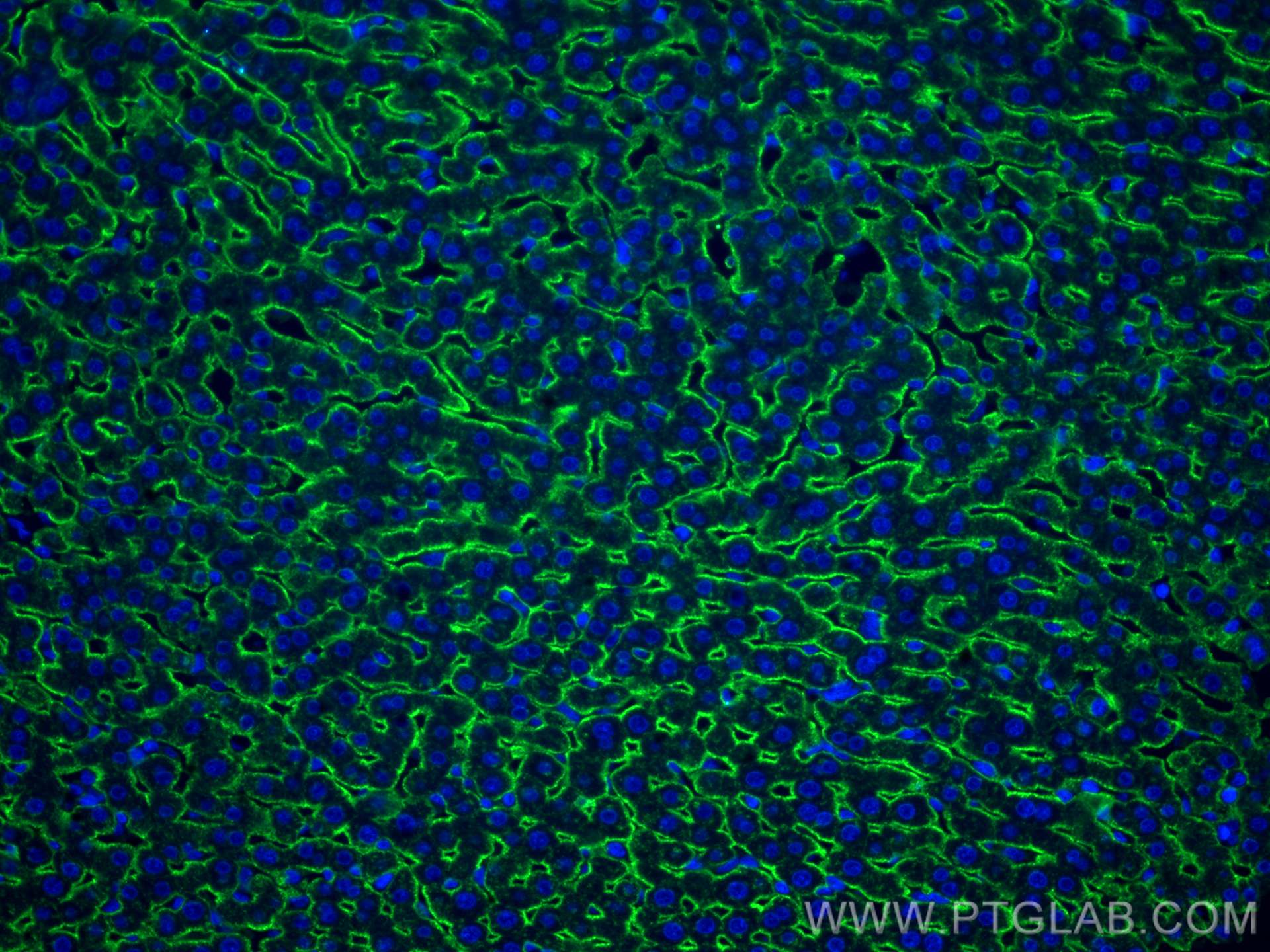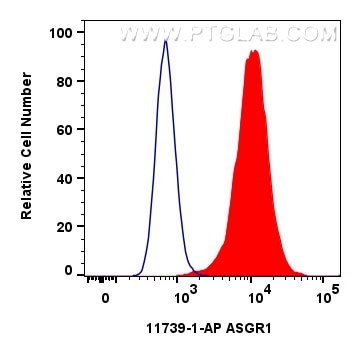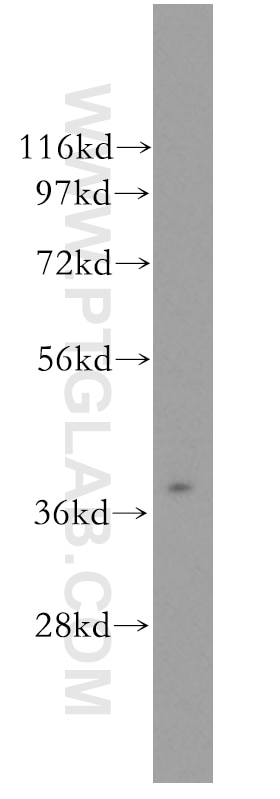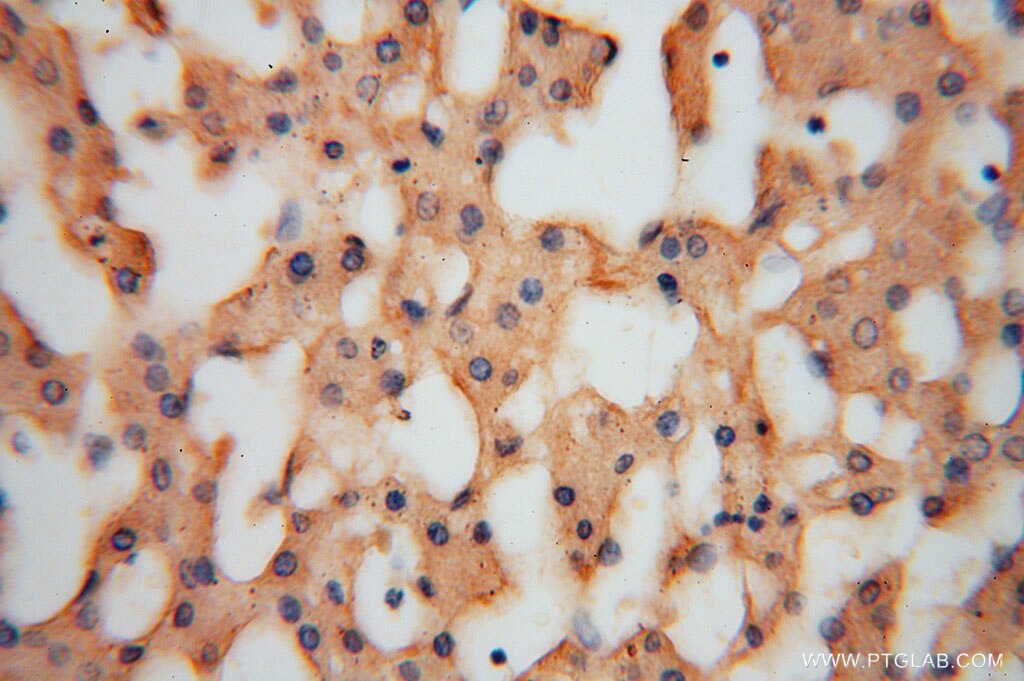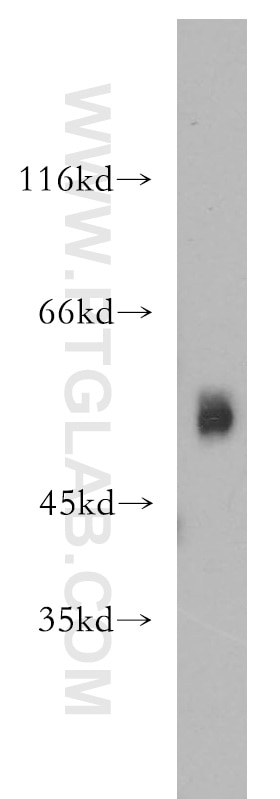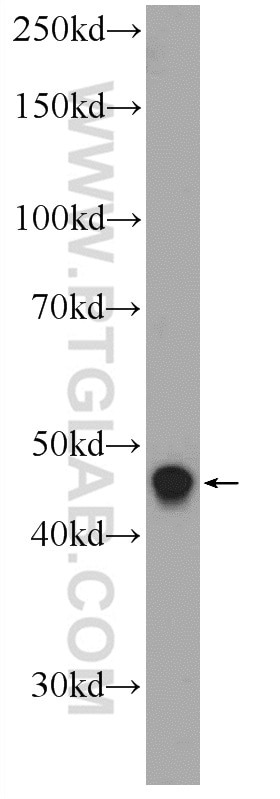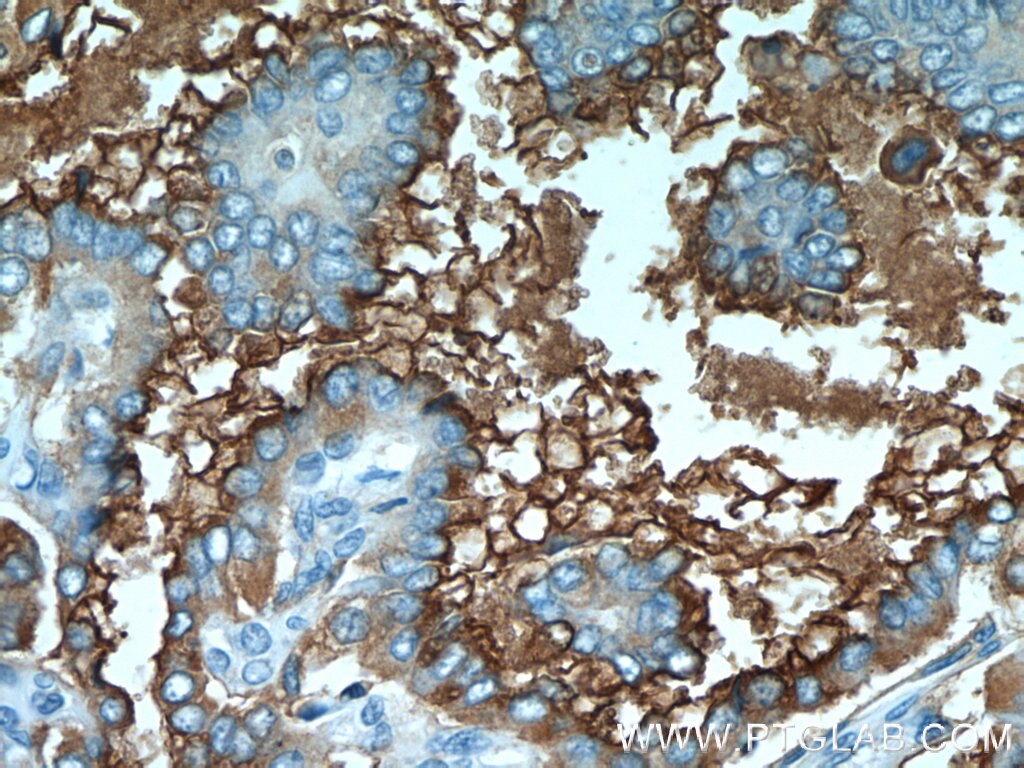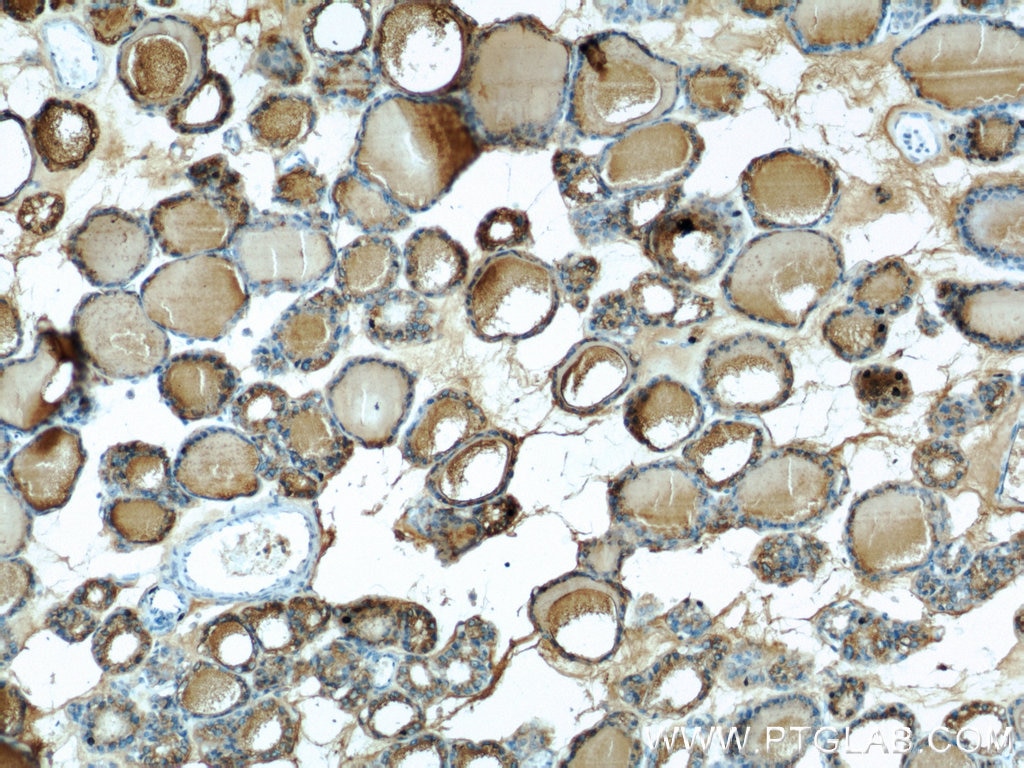- Phare
- Validé par KD/KO
Anticorps Polyclonal de lapin anti-ASGR1
ASGR1 Polyclonal Antibody for WB, IHC, IF-P, FC, IP, ELISA
Hôte / Isotype
Lapin / IgG
Réactivité testée
Humain, rat, souris
Applications
WB, IHC, IF-P, FC, IP, CoIP, ELISA, Blocking assay
Conjugaison
Non conjugué
N° de cat : 11739-1-AP
Synonymes
Galerie de données de validation
Applications testées
| Résultats positifs en WB | cellules HepG2, tissu hépatique de rat, tissu hépatique de souris, tissu hépatique humain |
| Résultats positifs en IP | tissu hépatique de souris, |
| Résultats positifs en IHC | tissu hépatique de rat, tissu de cancer du foie humain, tissu hépatique de souris il est suggéré de démasquer l'antigène avec un tampon de TE buffer pH 9.0; (*) À défaut, 'le démasquage de l'antigène peut être 'effectué avec un tampon citrate pH 6,0. |
| Résultats positifs en IF-P | tissu de cancer du foie humain, tissu hépatique de rat, tissu hépatique humain |
| Résultats positifs en cytométrie | cellules HepG2, |
Dilution recommandée
| Application | Dilution |
|---|---|
| Western Blot (WB) | WB : 1:5000-1:50000 |
| Immunoprécipitation (IP) | IP : 0.5-4.0 ug for 1.0-3.0 mg of total protein lysate |
| Immunohistochimie (IHC) | IHC : 1:1000-1:4000 |
| Immunofluorescence (IF)-P | IF-P : 1:50-1:500 |
| Flow Cytometry (FC) | FC : 0.40 ug per 10^6 cells in a 100 µl suspension |
| It is recommended that this reagent should be titrated in each testing system to obtain optimal results. | |
| Sample-dependent, check data in validation data gallery | |
Applications publiées
| KD/KO | See 3 publications below |
| WB | See 10 publications below |
| IHC | See 2 publications below |
| IF | See 5 publications below |
| FC | See 2 publications below |
| CoIP | See 1 publications below |
Informations sur le produit
11739-1-AP cible ASGR1 dans les applications de WB, IHC, IF-P, FC, IP, CoIP, ELISA, Blocking assay et montre une réactivité avec des échantillons Humain, rat, souris
| Réactivité | Humain, rat, souris |
| Réactivité citée | Humain, souris |
| Hôte / Isotype | Lapin / IgG |
| Clonalité | Polyclonal |
| Type | Anticorps |
| Immunogène | ASGR1 Protéine recombinante Ag2310 |
| Nom complet | asialoglycoprotein receptor 1 |
| Masse moléculaire calculée | 291 aa, 33 kDa |
| Poids moléculaire observé | 38-42 kDa |
| Numéro d’acquisition GenBank | BC032130 |
| Symbole du gène | ASGR1 |
| Identification du gène (NCBI) | 432 |
| Conjugaison | Non conjugué |
| Forme | Liquide |
| Méthode de purification | Purification par affinité contre l'antigène |
| Tampon de stockage | PBS avec azoture de sodium à 0,02 % et glycérol à 50 % pH 7,3 |
| Conditions de stockage | Stocker à -20°C. Stable pendant un an après l'expédition. L'aliquotage n'est pas nécessaire pour le stockage à -20oC Les 20ul contiennent 0,1% de BSA. |
Informations générales
Asialoglycoprotein receptor (ASGPR), also known as the hepatic galactose/N-acetylglucosamine (GlcNAc) receptor or Ashwell receptor, is a C-type lectin expressed exclusively in hepatic parenchymal cells. ASGPR consists of two subunits, a major subunit (ASGR1, HL-1) and a minor subunit (ASGR2, HL-2), and specifically recognizes terminal β-linked galactose or GlcNAc on circulating glycoproteins or cells. This receptor plays a critical role in serum glycoprotein homeostasis by mediating the endocytosis and lysosomal degradation of glycoproteins that contain terminal galactose or GlcNAc residues. ASGPR may facilitate hepatic infection by multiple viruses including hepatitis B, and is also a target for liver-specific drug delivery.
Protocole
| Product Specific Protocols | |
|---|---|
| WB protocol for ASGR1 antibody 11739-1-AP | Download protocol |
| IHC protocol for ASGR1 antibody 11739-1-AP | Download protocol |
| IF protocol for ASGR1 antibody 11739-1-AP | Download protocol |
| IP protocol for ASGR1 antibody 11739-1-AP | Download protocol |
| FC protocol for ASGR1 antibody 11739-1-AP | Download protocol |
| Standard Protocols | |
|---|---|
| Click here to view our Standard Protocols |
Publications
| Species | Application | Title |
|---|---|---|
Nano Lett A Potent Branched-Tail Lipid Nanoparticle Enables Multiplexed mRNA Delivery and Gene Editing In Vivo. | ||
Acta Biomater Modeling nonalcoholic fatty liver disease on a liver lobule chip with dual blood supply. | ||
Biomaterials Dual targeted delivery of statins and nucleic acids by chitosan-based nanoparticles for enhanced antiatherosclerotic efficacy. | ||
Cancer Res ASO-Based PKM Splice-Switching Therapy Inhibits Hepatocellular Carcinoma Growth. | ||
Mol Ther Enhanced Potency of GalNAc-Conjugated Antisense Oligonucleotides in Hepatocellular Cancer Models. |
Avis
The reviews below have been submitted by verified Proteintech customers who received an incentive forproviding their feedback.
FH Kamal (Verified Customer) (02-15-2024) | Mouse liver lysates were subjected to SDS PAGE followed by western blot with 11739-1-AP (ASGR1 antibody) at dilution of 1:25000 incubated at 4 degree C overnight. ASGR1 bands appeared at about 42 kDa.
|
FH Kamal (Verified Customer) (02-15-2024) | Mouse liver lysates were subjected to SDS PAGE followed by western blot with 11739-1-AP (ASGR1 antibody) at dilution of 1:25000 incubated at 4 degree C overnight. ASGR1 bands appeared at about 42 kDa.
|
FH James (Verified Customer) (11-18-2022) | Very good antibody! Used it to label hepatocytes in section of paraffin-embedded liver tissue
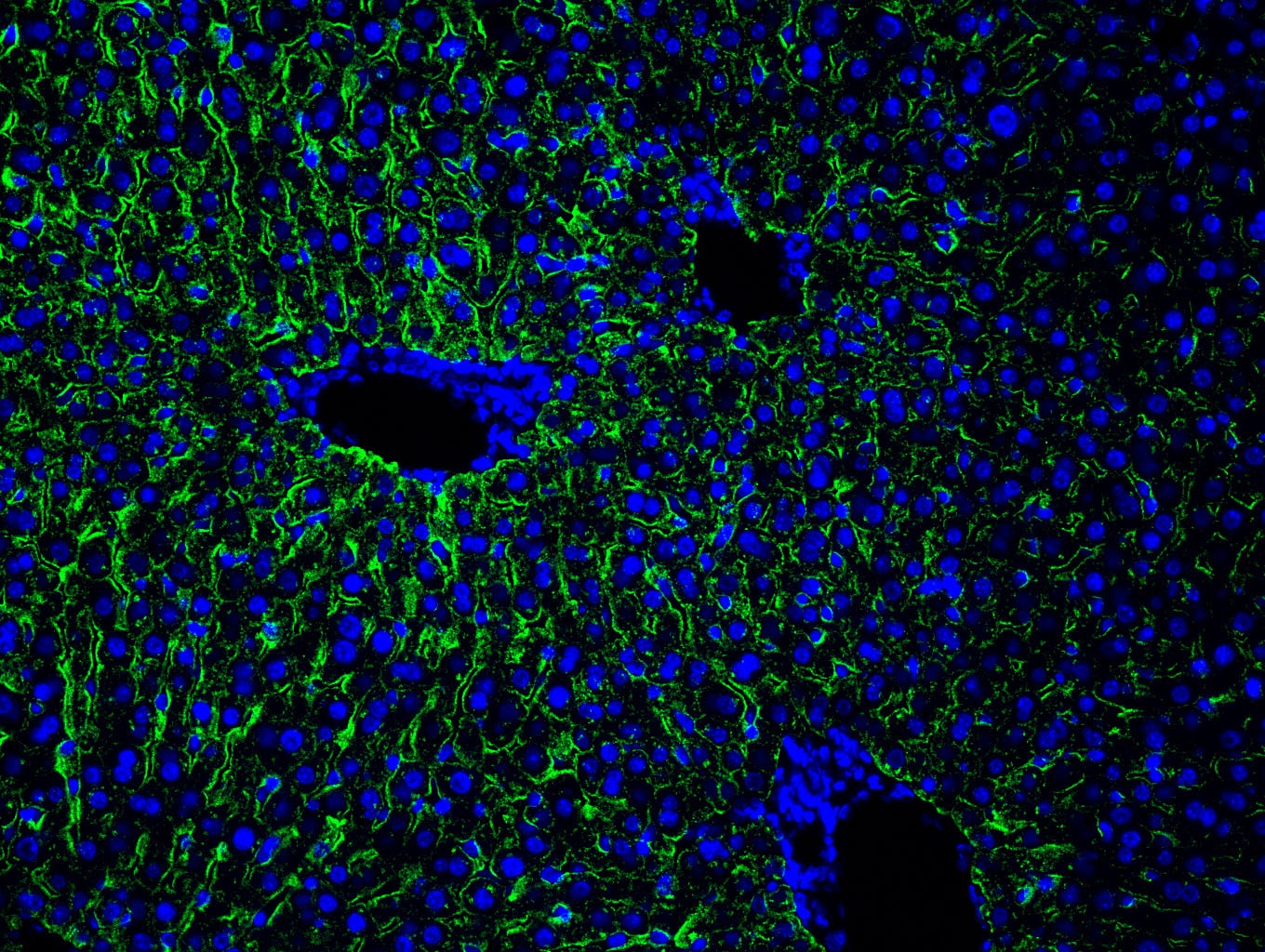 |
